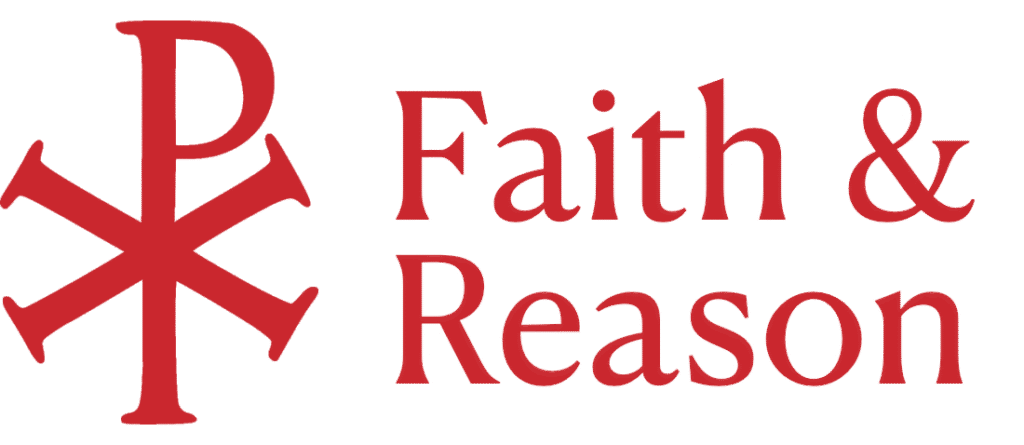
Student Portal

Investigation 1: Theological Slide Set
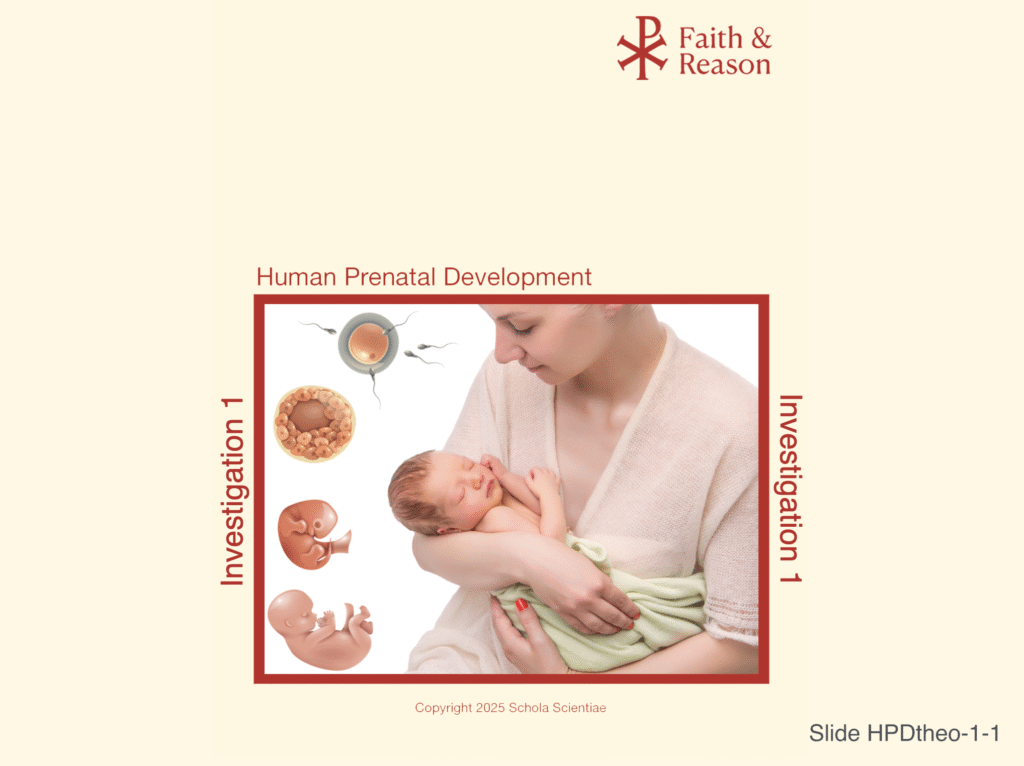
This slide mirrors the science slide structure to provide familiarity. Just as you explored the physical beginnings of human life in science, you’ll now reflect on the sacred meaning of that life.
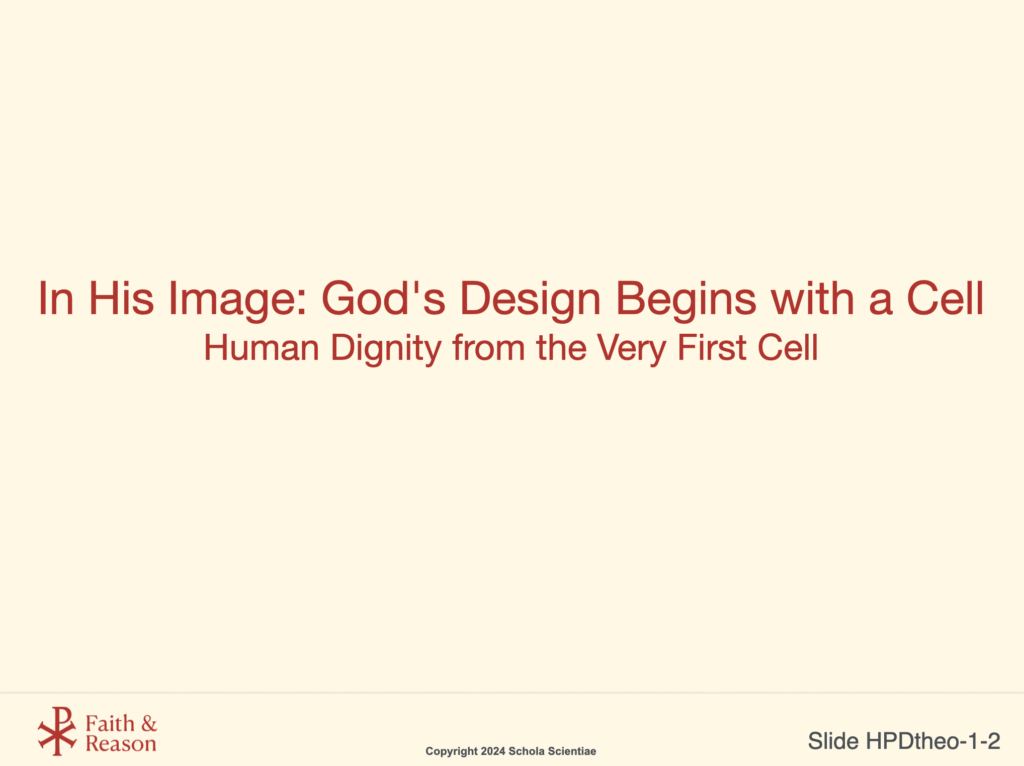
There is a connection between God’s design and the beginning of life at the cellular level. Reflect on what it means for a human – to be created in God’s image from the very first moment.
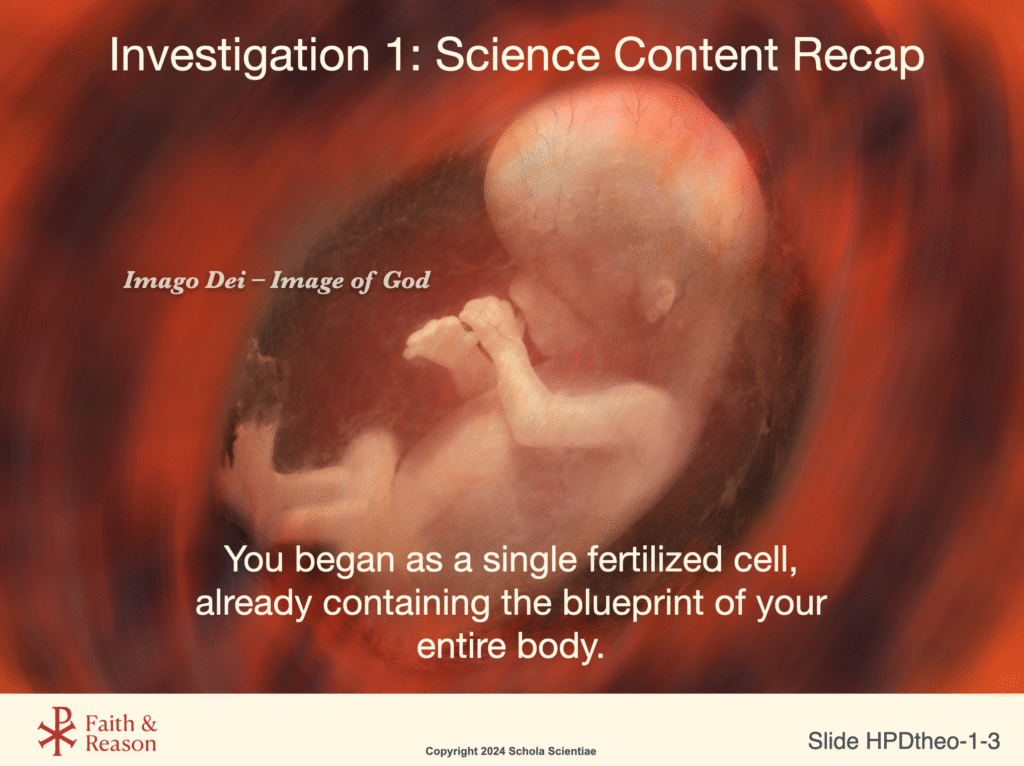
Use this slide to review what you learned in science. Notice the phrase ‘Imago Dei – Image of God‘ as the bridge from biology to theology. What does it mean that our genetic code reflects more than biology—it reflects divine purpose?
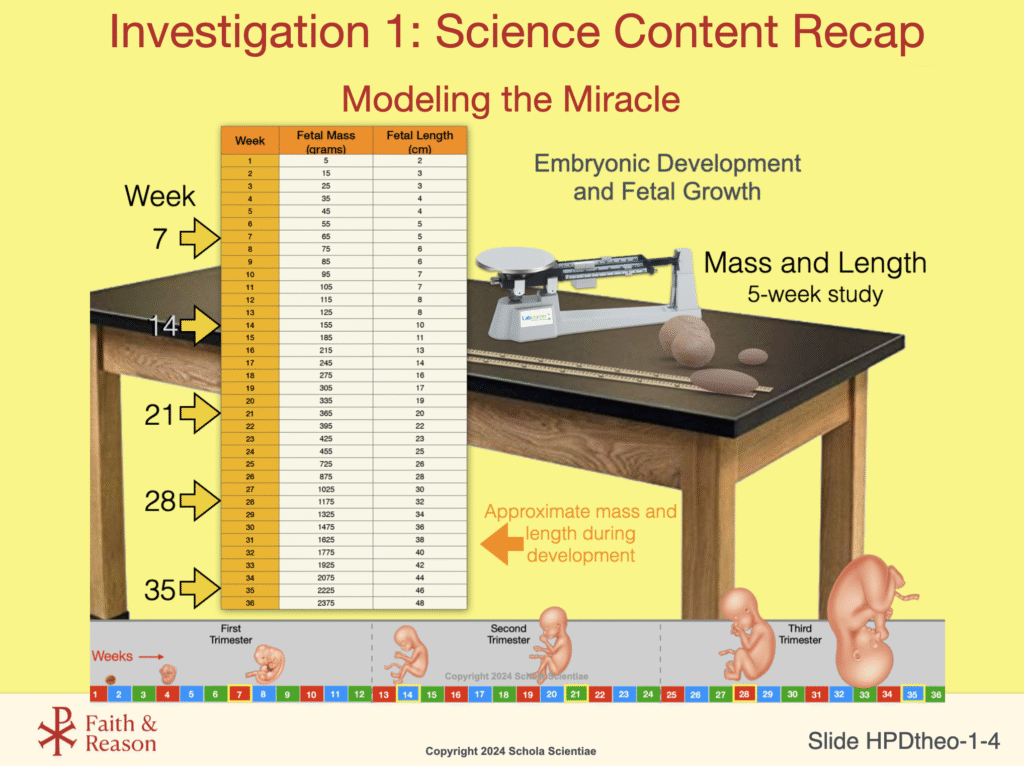
This slide shows a part of the lab for Investigation 1 in which the development of a human, from conception to birth, occurs. Notice how scientific measurement of fetal development reveals the miracle of life. This data (mass, length), is not just technical—it’s evidence of God’s unfolding plan. It invites wonder at the order and beauty of development.
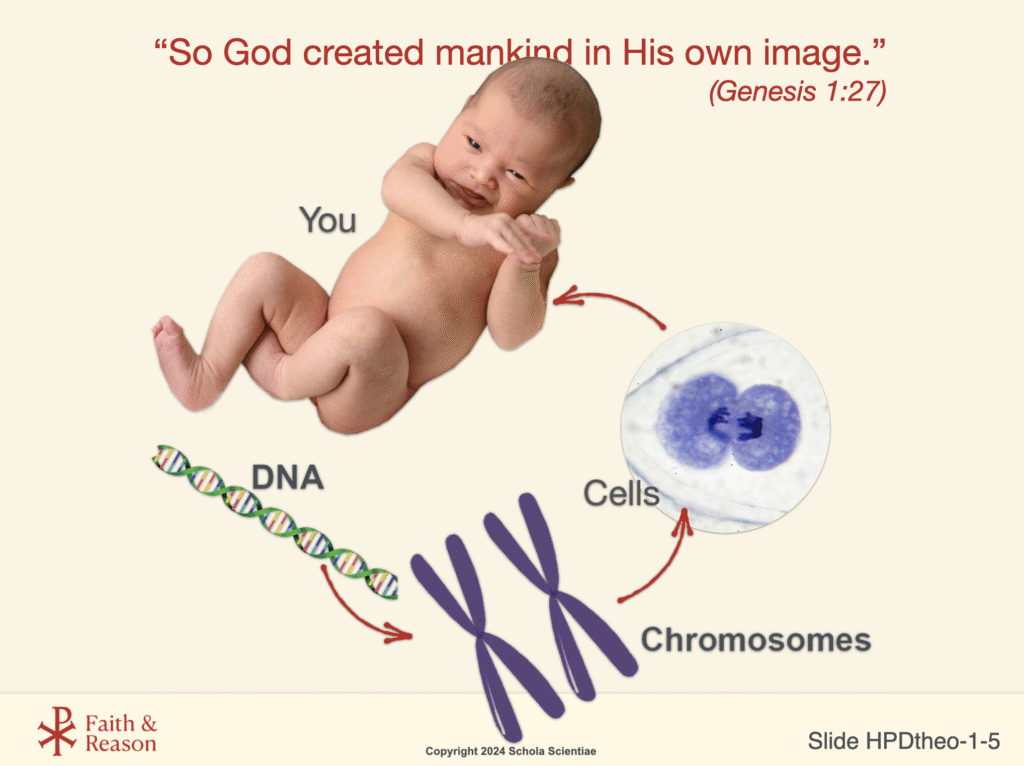
Read the verse aloud. Can you connect the image of the baby to the idea of being made in God’s image? Consider the visual ‘DNA-to-you’ sequence: ‘Even in our cells, we carry God’s design.’ Ask yourself: ‘How is your body a reflection of God?’
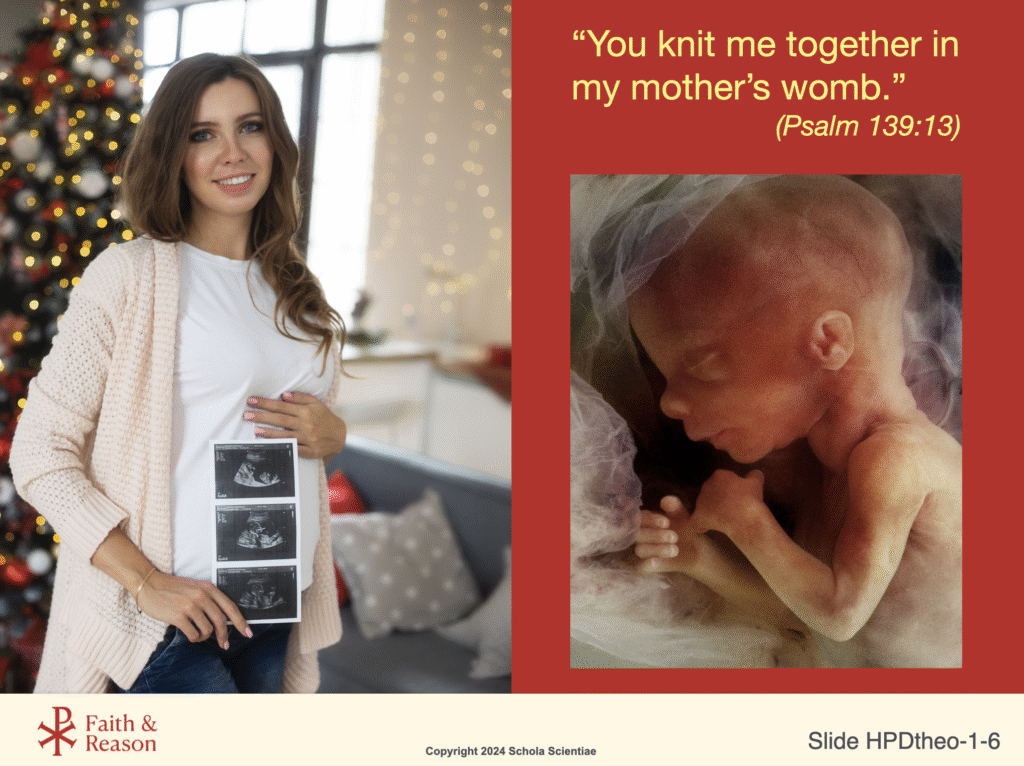
Reflect quietly or journal: ‘What does it feel like to know God formed you with such care?’ Use the image of the mother and ultrasound to appreciate the tenderness of divine creation.
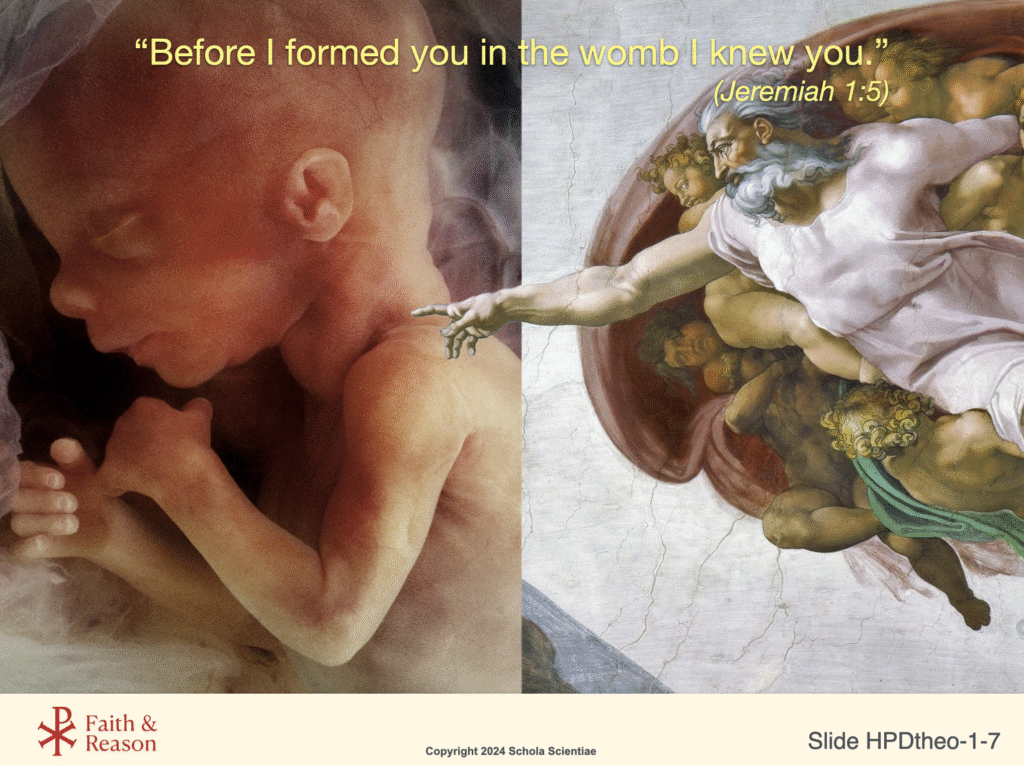
God has knowledge of each person before birth. Compare the Scripture with Michelangelo’s image shown in the slide. It shows God reaching out to humanity from the beginning. Ask yourself: ‘What might God already know about my purpose?’
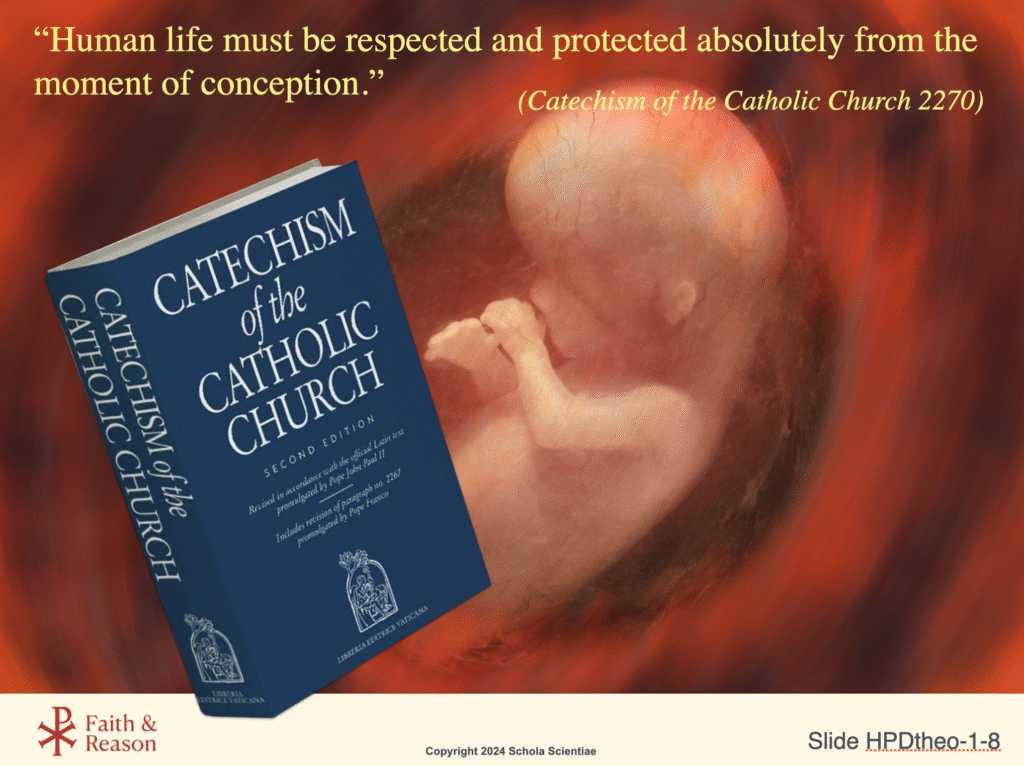
In this slide, we ground our theological discussion in Church teaching. It is clear that the Church affirms the sanctity of life from conception. Ask yourself: ‘Why do you think the Church says life must be protected absolutely from conception?’
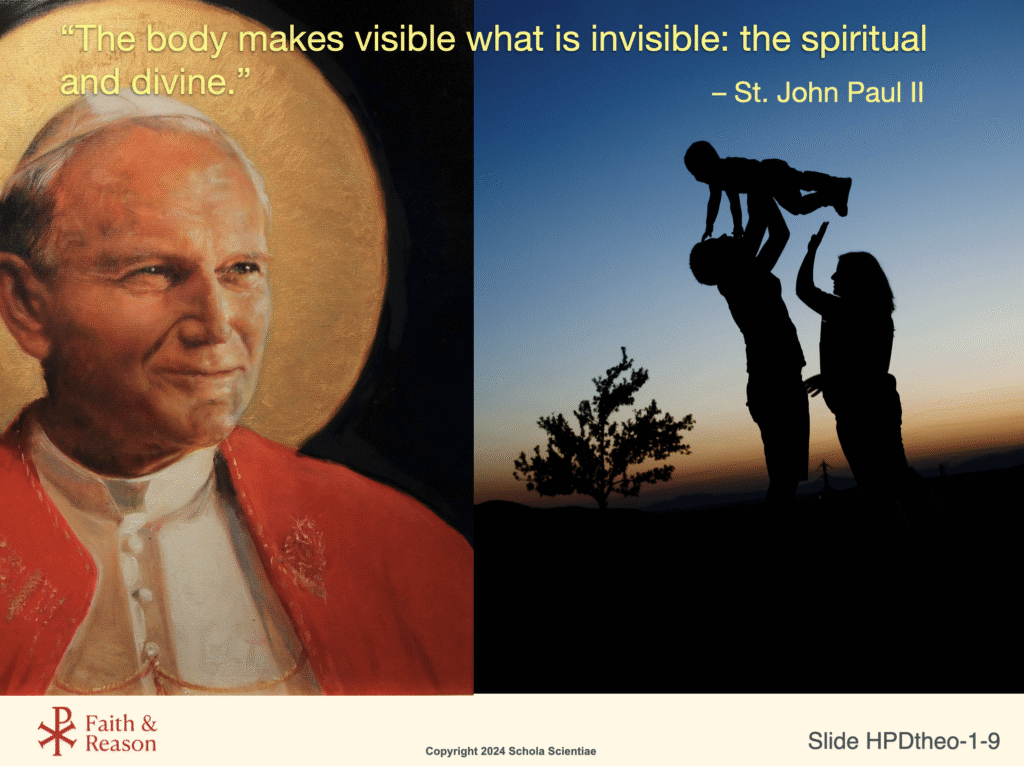
St. John Paul II, in his Theology of the Body (TOB) teaches that the human body is not just biological—it’s theological. Reflection on this question: ‘How does your body show who you are inside—your soul, your love, your dignity?’
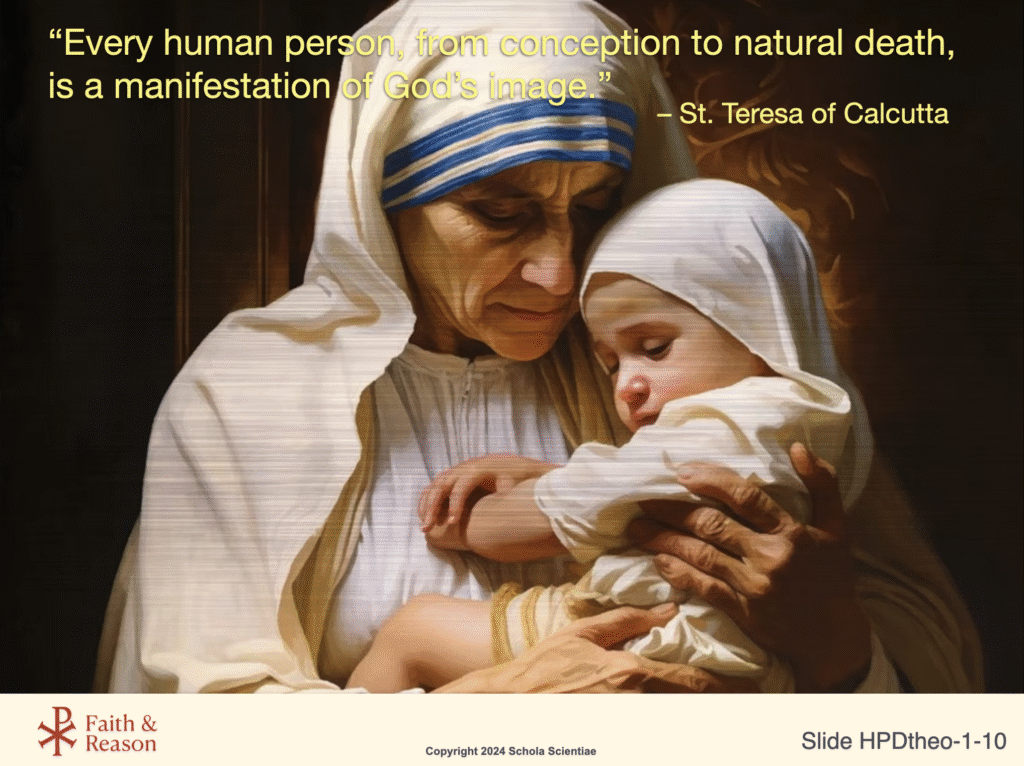
Quote from St. Teresa of Calcutta
Read St. Teresa’s quote to yourself slowly. Write a short sentence about how this quote affects your view of unborn life or your own self-worth.
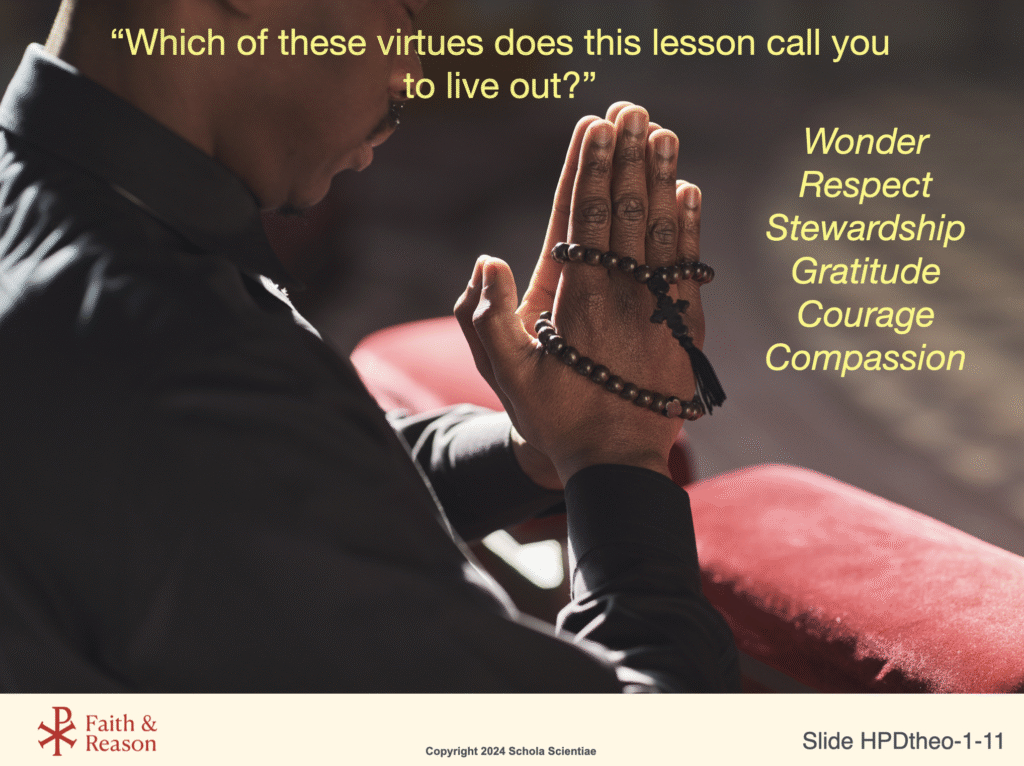
Virtue Reflection
Read each virtue aloud. Your teacher may ask you to choose two virtues and write how understanding human development helps you live these virtues out.
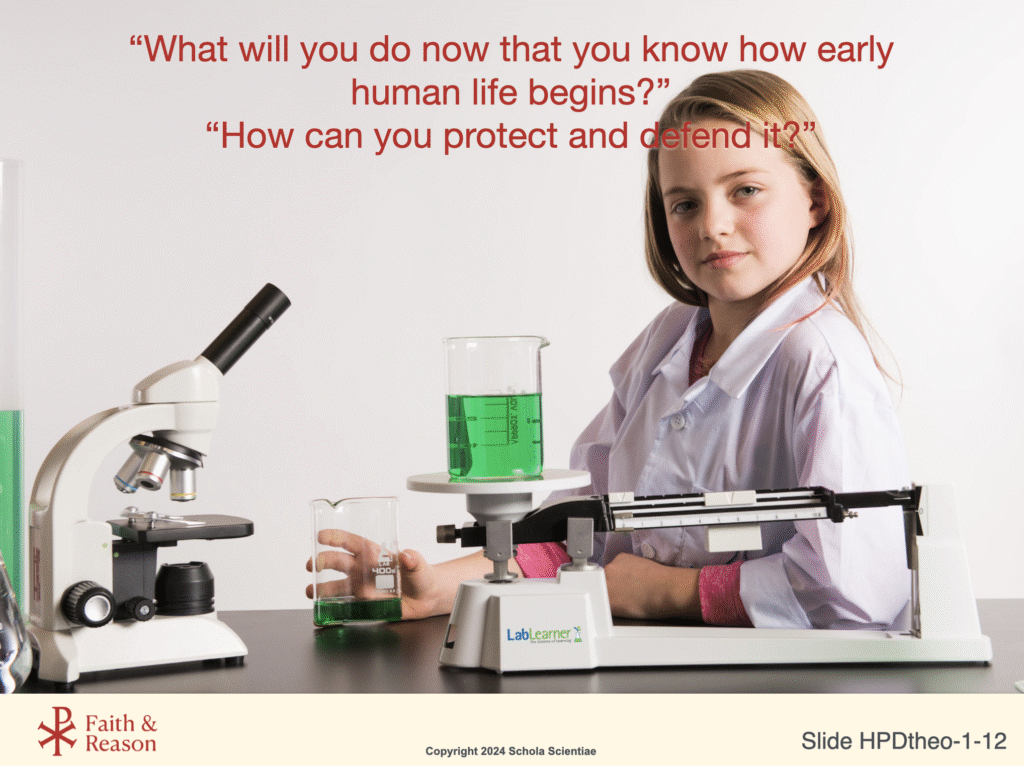
Moral Challenge
This slide encourages personal responsibility. Ask yourself: ‘What will you do with what you’ve learned?’ Knowledge creates moral responsibility to protect and defend life in both words and actions.
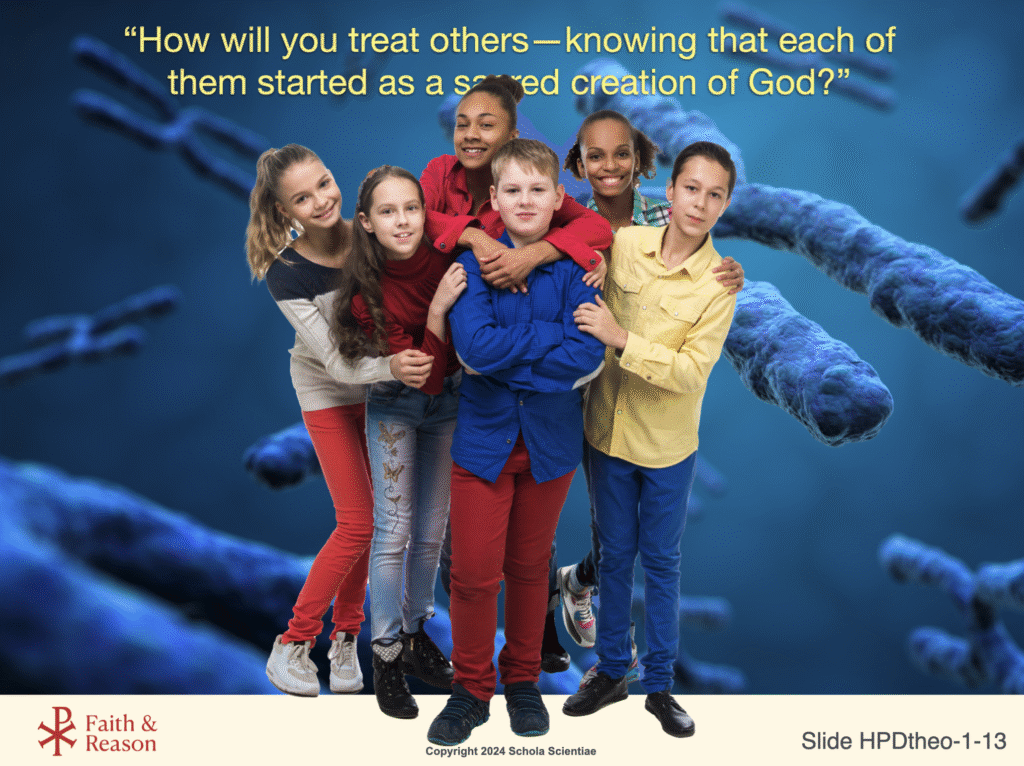
Social Reflection
Be prepared to discuss the following in class: ‘How should we treat others if we believe each person is a sacred creation?’ Link this back to virtues like respect and compassion.
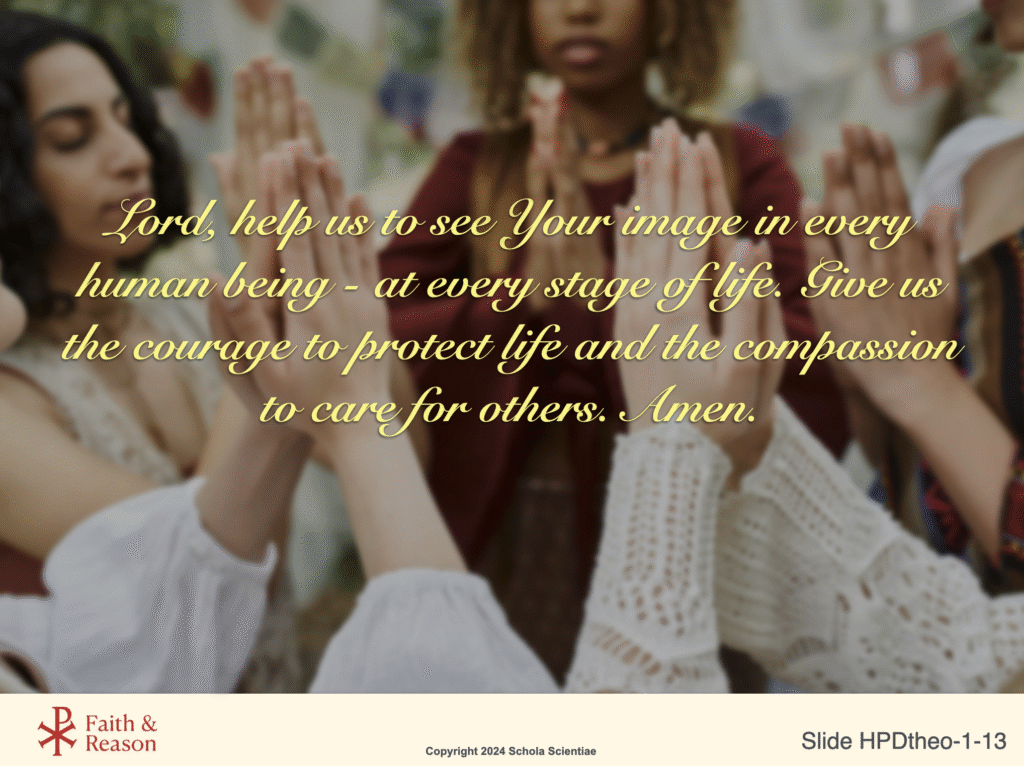
Closing Prayer
Pray together as a class. Optionally, the teacher may ask students to offer their own prayer intentions for unborn children, parents, or scientists working in this field.
